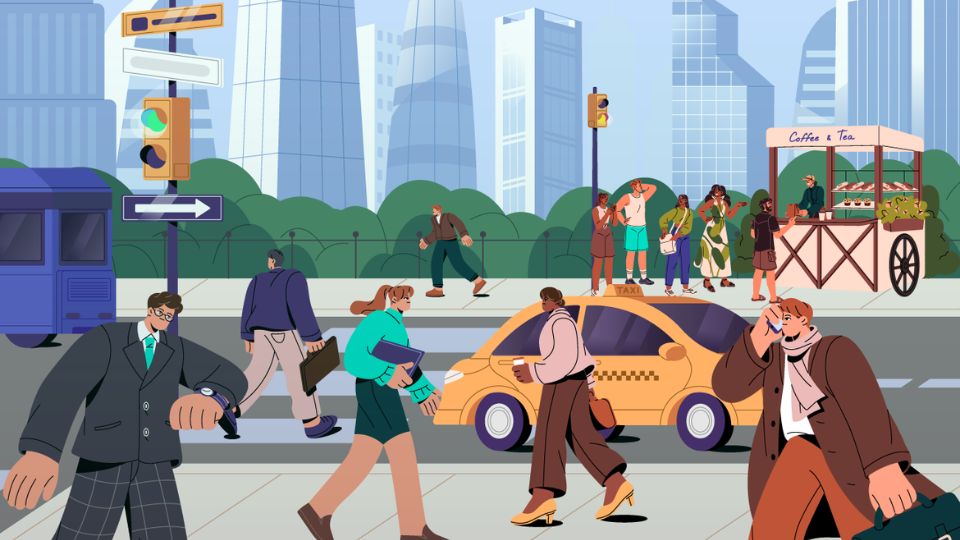Move over, New York and Los Angeles. A recent study by moveBuddha found that mid-size American cities with populations ranging from 250,000 to 750,000 ranked highest among the top 25 future 15-minute cities in the United States. Some larger cities like Chicago and Philadelphia, known for their neighborhood-level urban planning, also made the list.
The concept that people should have easy access to their essential needs near their homes was introduced by Anne Hidalgo, the Mayor of Paris, during the Covid pandemic. This idea has gained significant support from urban planners and policymakers worldwide, including in large areas like North America. The 15-minute city could potentially change how we plan cities in the 21st century, similar to how Le Corbusier’s idea of the tower and car-focused radiant city had an impact in the 20th century. Urban planners are starting to think about what cities that can be reached within ten minutes or even five minutes might look like.
Which cities were identified as future 15-minute cities?
Miami was ranked first this year with a total score of 7.83. San Francisco ranked second, with a total score of 6.10. San Francisco’s score was lower because there is not enough access to childcare (2.3), which is a problem in many other highly ranked cities on the list. Boston, for example, received a very low score of 0.4 in this area.
- IRS Grants Extra Time for 2024 Taxes to Kentucky’s April Storm Survivors
- Fed’s June Meeting: Rate Cuts Not in the Cards: What’s Next?
- Deadline Alert: Michigan Schools Must Act Fast with Federal Stimulus Funds
- How to Access VA Dependent Education Benefits with a 100% Disability Rating
- Big News for SSDI: Social Security Might Add $600 to Payments
Miami was ranked number one by the study makers because their plans to create small, walkable urban centers throughout the city were successful. Miami is often referred to as a city made up of many smaller communities. One of the exciting projects happening in Miami is the Underline, which is transforming the space beneath the Metrorail transit lines into a ten-mile park and trail.
This project aims to provide safer options for walking and biking for the people who live in Miami. It seems like Miami has changed a lot since I last visited 14 years ago. It’s great to hear about these improvements. It seems that Miami’s score was likely improved by not considering the quality of public transportation, even though the city has been losing bus riders over the past ten years.
However, almost all cities on the list had a major issue with housing affordability, including Miami (2.9) and San Francisco (3.3). Out of the top ten cities listed, six had home affordability scores that were lower than 5 out of 10. When considering all the cities on the top 25 list, Long Beach, California was the least affordable (with a score of 2.7), while Pittsburgh was the most affordable (with a score of 7.3).
Also Read: Michigan Eatery Becomes the Best Seafood Restaurant in the Entire State
What criteria were measured by the study?
MoveBuddha collected and analyzed data from the 78 biggest cities in the United States to calculate its information. To calculate the scores, Joe Robison, the author of the study, used the walking and biking scores from Walkscore.com for each city. The scores also consider other factors, which were obtained from publicly available data, often through the Google Places API. These factors include:
- Participation in the labor force;
- The number of social groups or organizations a person belongs to;
- The food environment index measures how easy it is for people to access healthy foods.
- Access to opportunities for exercise;
- The density of health and safety providers refers to the number of hospitals, emergency medical services, mental health providers, primary care physicians, nursing homes, fire stations, and local law enforcement agencies in a given area.
- The severe housing problem index measures overcrowding and properties that are in urgent need of repair.
- The housing to income ratio refers to the comparison between the cost of housing and a person’s income.



Leave a Reply